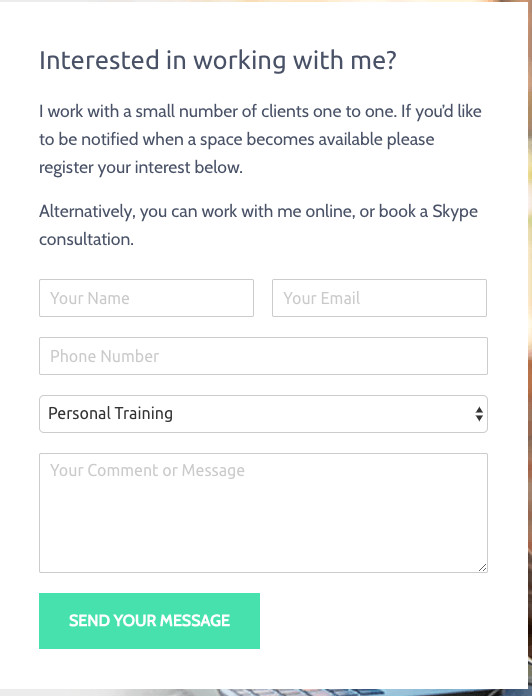Your biography is one of the most visited pages on your website.
That gives you an opportunity to connect with potential clients in a profound, deeply personal way—if you can get their attention fast enough, and hold it long enough, to make that connection.
“If” does a lot of work in that statement.
For personal trainers, the challenge of writing an effective bio comes from two directions: Some find it easy to brag about themselves. Others, like me, find it excruciating. (I'm British, and if we Brits talk about ourselves at all, we quickly apologize for it.)
But the secret to writing an effective bio isn’t to be boastful or modest. In fact, it isn’t about you at all.
A great personal trainer biography is about your customer.
It’s about the value you bring to your clients. It’s about how your history, your passions, your accomplishments, and your skills apply to their needs and goals.
These seven steps will help you write the perfect profile, one that appeals to your ideal clients and shows you’re the right personal trainer for them.
1. Show you understand what your client thinks, wants, and needs
You can’t speak to your customers until you know who they are. A few questions to get started:
- How old are they?
- Are they married? Divorced? Parents or grandparents?
- Do they eat out a lot?
- What are they struggling with?
- What have they tried before, and why hasn’t it worked?
- Do they like to exercise, or are they afraid of it?
Your goal is to write your biography in a way that shows you understand their pain points.
Here’s an example from Ray Graber:
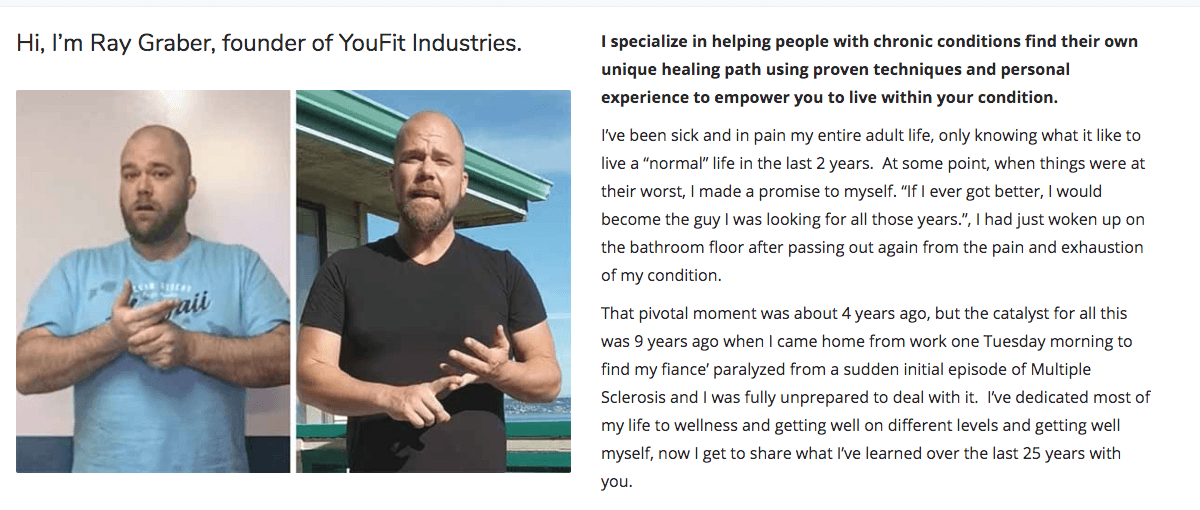
READ ALSO: How to Find Your Target Market for Personal Training
2. Highlight what you can do for the client
Choose words that are descriptive and concrete, and that highlight what you can accomplish for others. Aim for simple language that clearly lays out not only what you do, but why the client should believe you.
Robbie Thompson, for example, emphasizes what he offers beyond workouts:
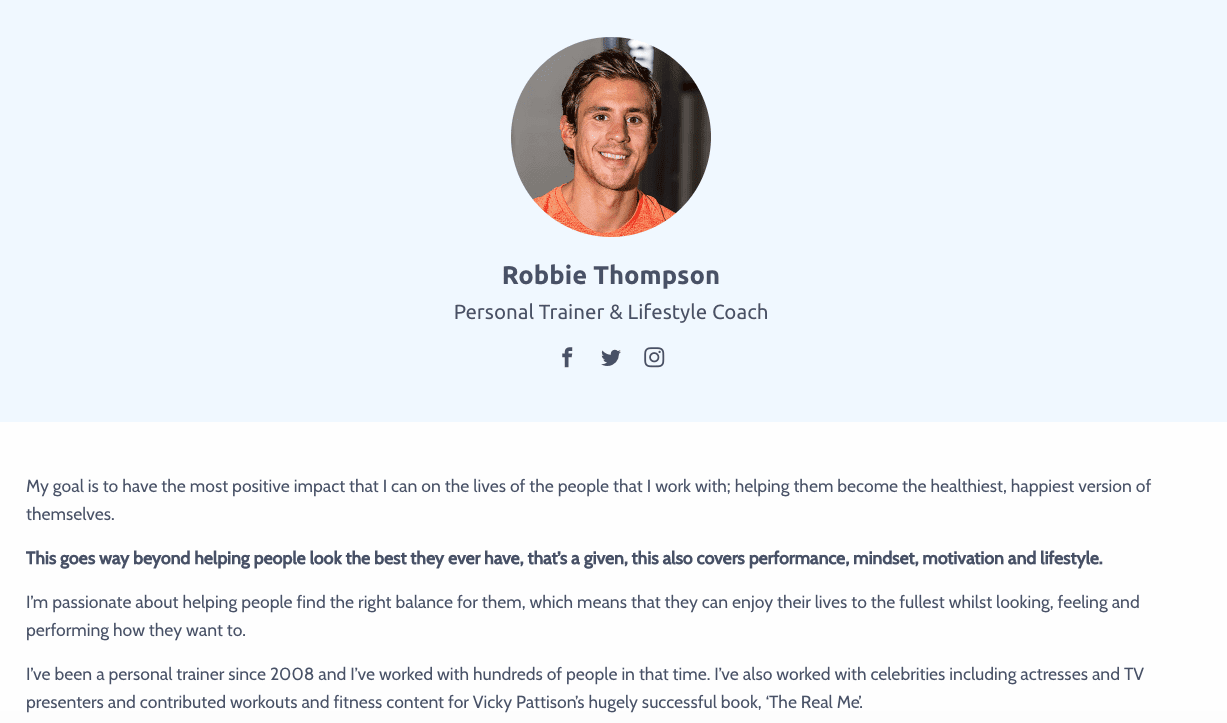
READ ALSO: What’s the Difference Between a Fitness Coach and a Personal Trainer?
3. Keep your copy lean
A great bio can be like a great meal: It has enough volume to make you feel full but not stuffed. It gives you the nutrients you need without a lot of filler. And there’s a simplicity to the message that makes it seem achievable, rather than overwhelming you with details.
Consider this About page from Gil Mesina:
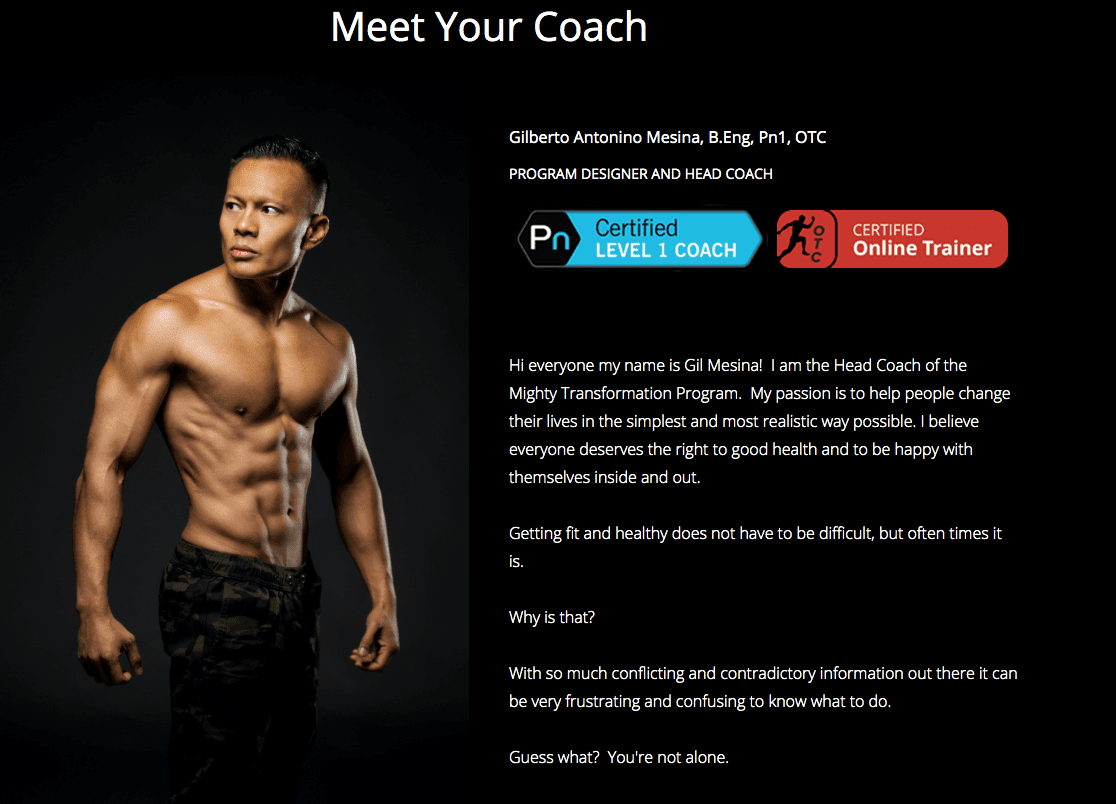
By the time a potential client scrolls to the bottom of your About page, they should know:
- Your name*
- What you specialize in
- What services you offer
- How you’re qualified for that specialty and those services
- Your professional memberships or affiliations
- How to contact you
- Where you’re based (if you do in-person training)
You can also link to any relevant media you’ve either created or been featured in—articles, interviews, podcasts—along with upcoming appearances, either in person or online.
* Don’t give yourself a cute moniker, or pretend your parents named you “Coach.” Potential customers shouldn’t have to do a forensic Google search to learn your full name.
READ ALSO: How to Raise Your Profile in the Fitness Industry
4. Share your personal challenges
Aaron Smyth makes his own struggles the centerpiece of his pitch to clients:
“I spent years going up and down in weight and struggling with food issues. I was no longer my confident self and was beginning to doubt if my personal training clients trusted me because of my shape. I needed to get motivated in order to inspire others to do the same, so I really looked inward and found it in me to pull myself back from probably the worst shape in my life.”
Revealing this much only works if clients can see a clear transformation, which Smyth showcases next:

READ ALSO: How Much Should a Personal Trainer Keep Personal?
5. Anticipate your customers’ skepticism
Weight-loss coach Esther Avant doesn’t just talk about what she can do for her clients, she anticipates their skepticism about whether she can relate to their challenges. In the process, as you can see in the screenshot at the top of this article, she showcases her personality and self-deprecating sense of humor:
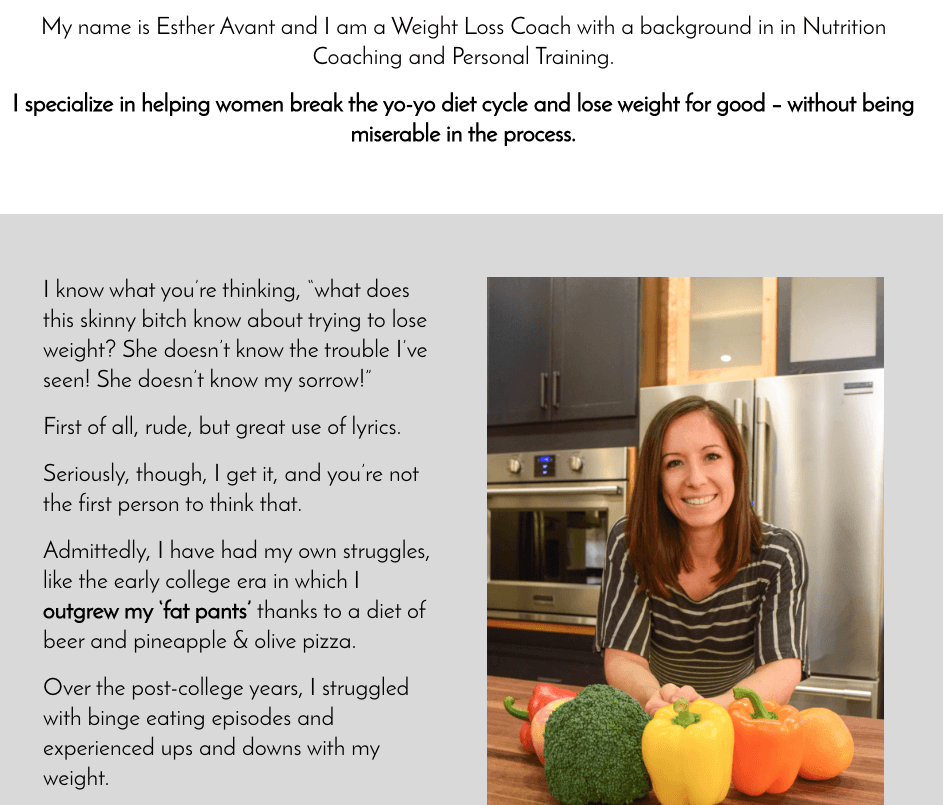
READ ALSO: The Ancient Secret to Writing Powerful Sales Copy
6. Sell your strengths by highlighting what makes you different
Let’s return to my very British reluctance to brag about myself. One way to get around talking about your accomplishments is to invite the potential customer to see you as you see yourself, in all your quirky glory.
Nikki Naab-Levy shows one way to do it:

READ ALSO: How to Speak Your Audience’s Language
7. Give your clients a call to action
Everything we’ve discussed so far brings us to this moment: What do you want the customer to do?
Book an appointment?
Download a free ebook?
Sign up for your email list?
Even if you’re giving a client multiple options, as Robbie Thompson does at the bottom of his About page, you want to give them a call to action:
Final thoughts
As you can see from the examples here, there’s no single way to write an effective personal trainer bio. What matters most is the effect it has on the customers you’re trying to attract.
Because even though it’s your story, it’s really about them.


